Winnipeg was a river of orange as thousands of people wearing orange shirts, ribbons skirts and even powwow regalia walked to honour the survivors or residential school as well as the children who are still missing.
For Michelle Standingready, a survivor of the Lebret and Maryvale schools in Saskatchewan, the memories are still raw.
“I spent about 5 years, in and out, from one residential school to another-why is it important to be here? Because, a lot of our friends went missing, unaccounted for and for my kids too,” said Standingready.
Non-Indigenous people joined in the walk as well.
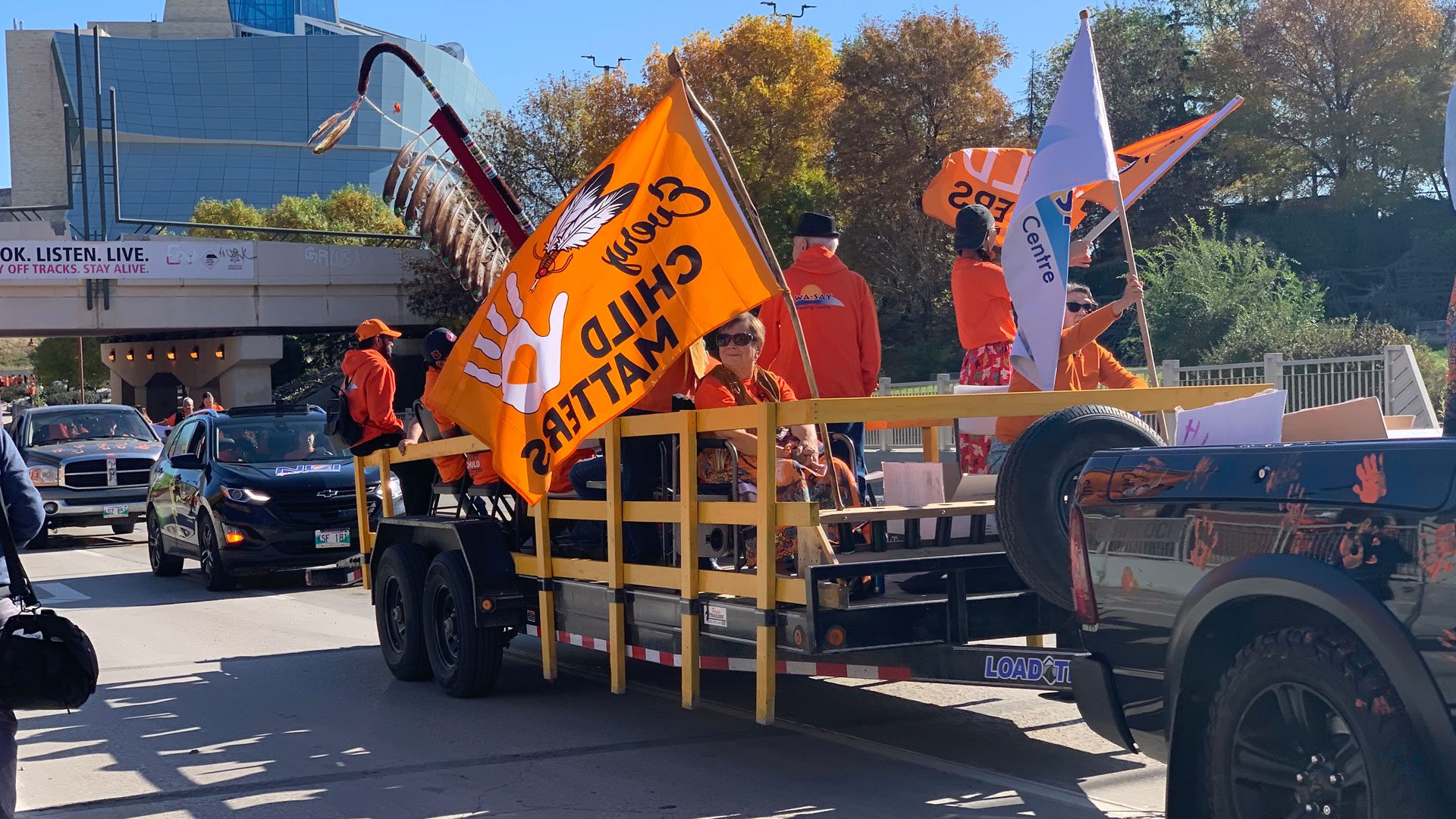
For Richard Kellie, who is taking an Indigenous studies course, the story of a classmate from Long Plain First Nation had a profound effect on him.
“[He was] 6 years old, he was taken away from his family and moved to the Indian residential school in Brandon, which meant he could have no more contact. Even though there was a school there, he got sent to the one in Brandon just to make sure the contact was lost,” said Kellie.
Edmonton hide camp
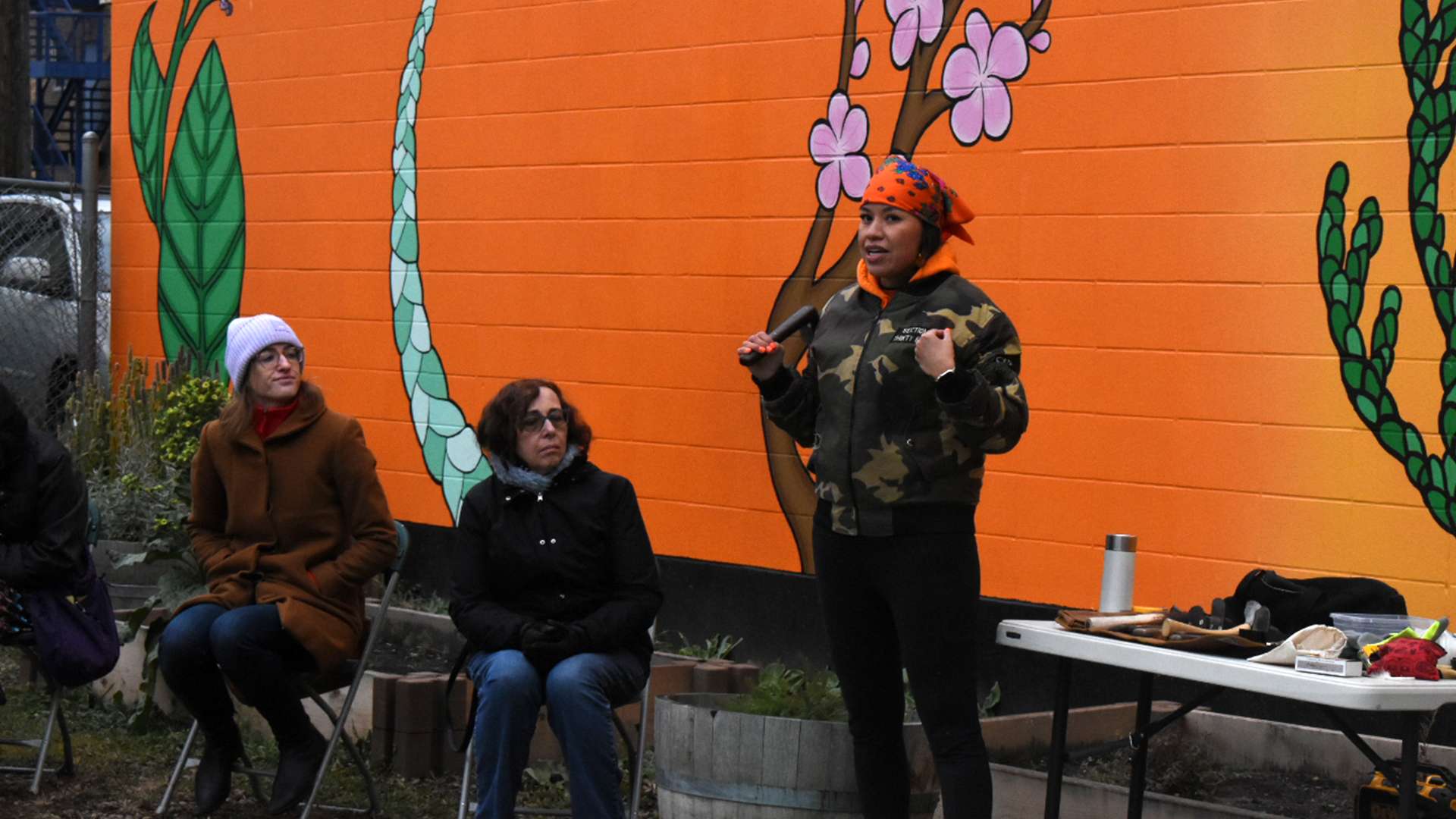
It was a crisp fall day in Edmonton where a group of around 20 people, a mix of Indigenous and non-Indigenous gathered in the inner city to attend a hide tanning workshop at an outdoor garden at the Ociciwan Contemporary Art Centre.
The event was part of National Truth and Reconciliation Day that was observed by communities from coast to coast to coast on Saturday.
At the session, Jessica Sanderson-Barry was holding a workshop on hide tanning. Participants stretched a moose and a bison hide over two large frames and propped them up against a muraled wall.
“It is such a somatic process and so healing,’ said Sanderson-Berry about holding the event on National Truth and Reconciliation Day. “I have a lot of folks who come and scrape. Even our kin on the streets will come in and watch and even if they don’t scrape it ignites the blood memory in them and good stories come out and it is good memories.”
One of the participants, Serenity Jacko, is being mentored by Sanderson-Berry to do hide work. As she is working on stretching the Bison onto a wood frame. Jacko, who is from Cold Lake, Alta., and a mix of Dene and Cree, said it was her third time working with hides.
“It is both healing and connecting back to the land… it is the best of both worlds,” said Jacko.
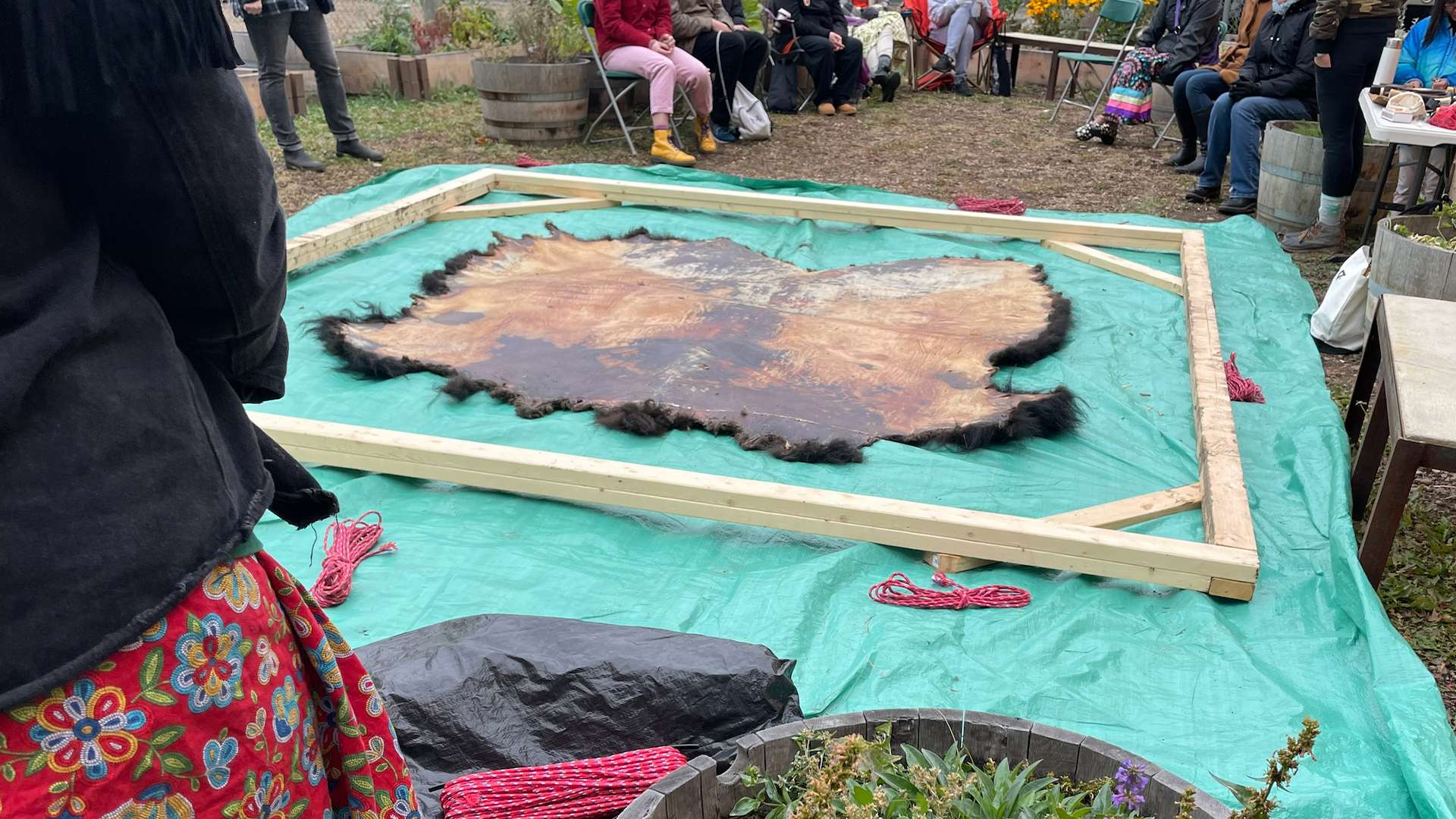
The Ociciwan Contemporary Art Centre is typically closed to observe the holiday but this year it worked out to host the event said Becca Taylor, the executive director for the centre.
“I’ve been really inspired by the urban hide tanning initiatives like Dene Nahjo… I think access is really important for folks who can’t get out into community,” said Taylor.
Other events were held throughout the city like a Truth and Reconciliation 10k walk.
Rhythms of Silence
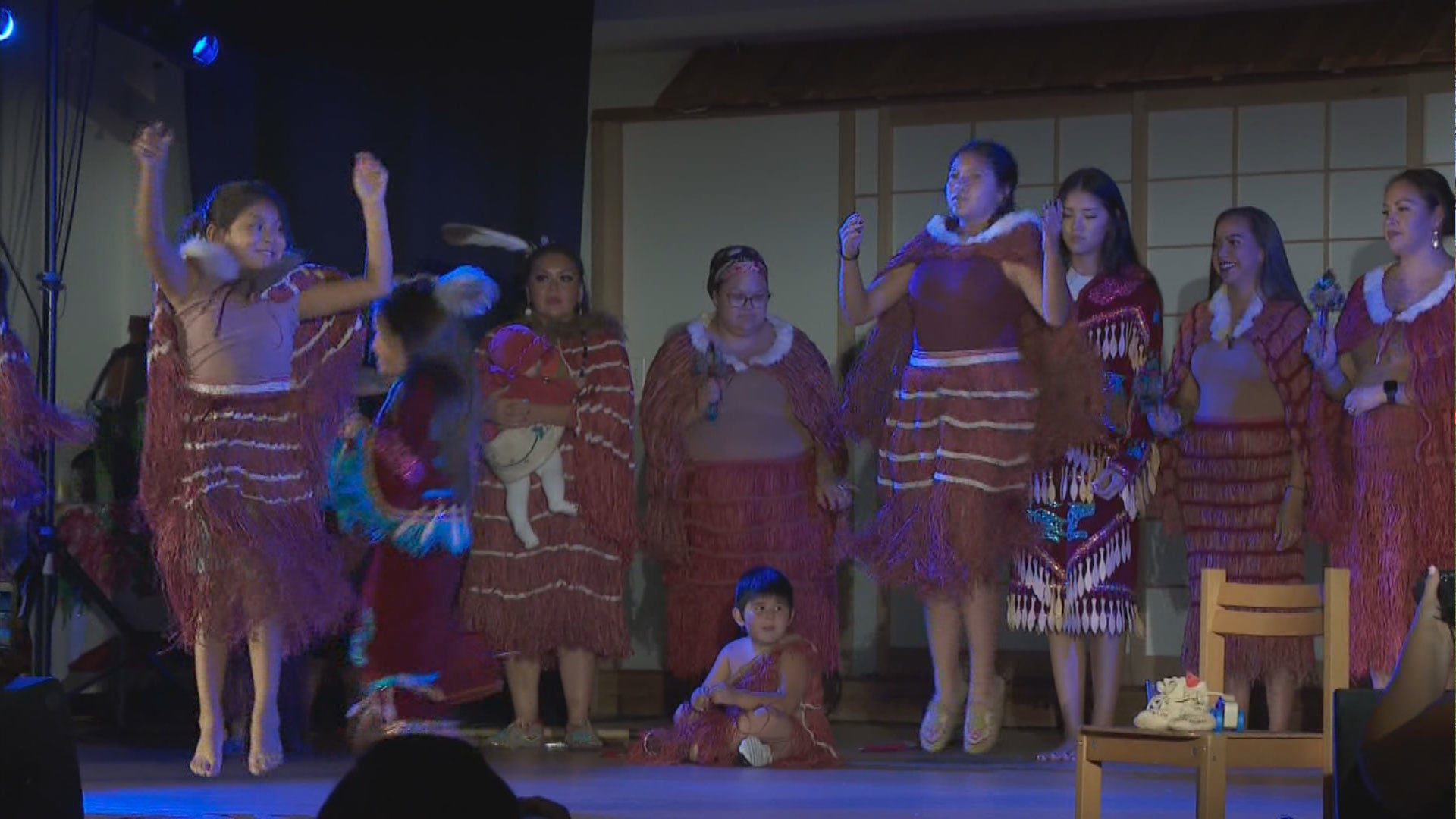
In Vancouver, the YWCA hosted an event called Rhythms of Silence. The focus was on honouring those who survived residential school as well as the children who never made it home.
Artist Teresa Walker was commissioned to create a cradle board art piece to honour the children. Attendees were able to write messages to the children.
“We wanted to have something where people could express their condolences or you know just send a message to our survivors,” said Walker.
Actress, screenwriter and performer Ranae Morriseau and her drum group M’Girl, paid a special tribute to the children who died at residential school.
Saskatoon walk
In Saskatoon, a walk led by residential school survivors saw thousands of people come out to commemorate the National Day for Truth and Reconciliation.
The walk, called Rock Your Roots, has been happening for the past seven years.
Shirley Isbister is one of the organizers.
She says the walk is impressive to see and take part in.
“The last one we had over 4,000 people in the walk,” said Isbister. “It was amazing to just turn around and just see a sea of orange and what we encourage and what a lot of the cultural people do is they wear their regalia they will carry signs participate so it’s rocking your roots no matter what culture you come from and at the same time honouring our residential school survivors.”
Prime Minister Justin Trudeau, who is in Saskatchewan to observe the day, said the occasion should be about listening to survivors.
“We must never forget the past and the injustices committed against Indigenous Peoples at residential schools, as well as the intergenerational trauma that remains today,” he said in a written statement. “Right now, with denialism sadly on the rise, uncovering the whole truth is more important than ever.”
Hundreds came out on a rainy day in Iqaluit
As rained poured down, well over 200 people attended ceremonies in Iqaluit. Representatives from Nunavut Tunngavik Incorporated, also called NTI, and other Inuit organizations gathered to honour the survivors and victims of residential schools.
There were 12 schools in what became known as the territory of Nunavut.
“I just want to say that this is something that we want to do as Inuit. Is to reconcile. What has gone through the last 40 years, 50 years. So this is something that really matters for us. Like it says every child matters. Every person matters in our case,” said Olayuk Akesuk, the president of the Qikiqtani Inuit Association.
A look at National Day for Truth and Reconciliation in Iqaluit from Trevor Wright:
Read more:
Probing the past: residential school secrets and archival challenges
A walk to a toppled statue in Montreal
In Montreal, orange-clad marchers gathered to walk from the base of Mount Royal to the pedestal where a statue of Canada’s first prime minister, John A. Macdonald, once stood before being toppled in 2020.
Macdonald was prime minister and when plans for the residential school system were designed.
As march participants gathered at the starting point, Resilience Montreal board director Ann Deer said she hopes the event serves as a reminder.
“I’m hoping the general public understands that today we’re here to talk about a horrible time in Canada’s history,” Deer said. “If we don’t learn our past we’re going to repeat our past. And because of that dark history we have many people still struggling.”
Nova Scotia gathering
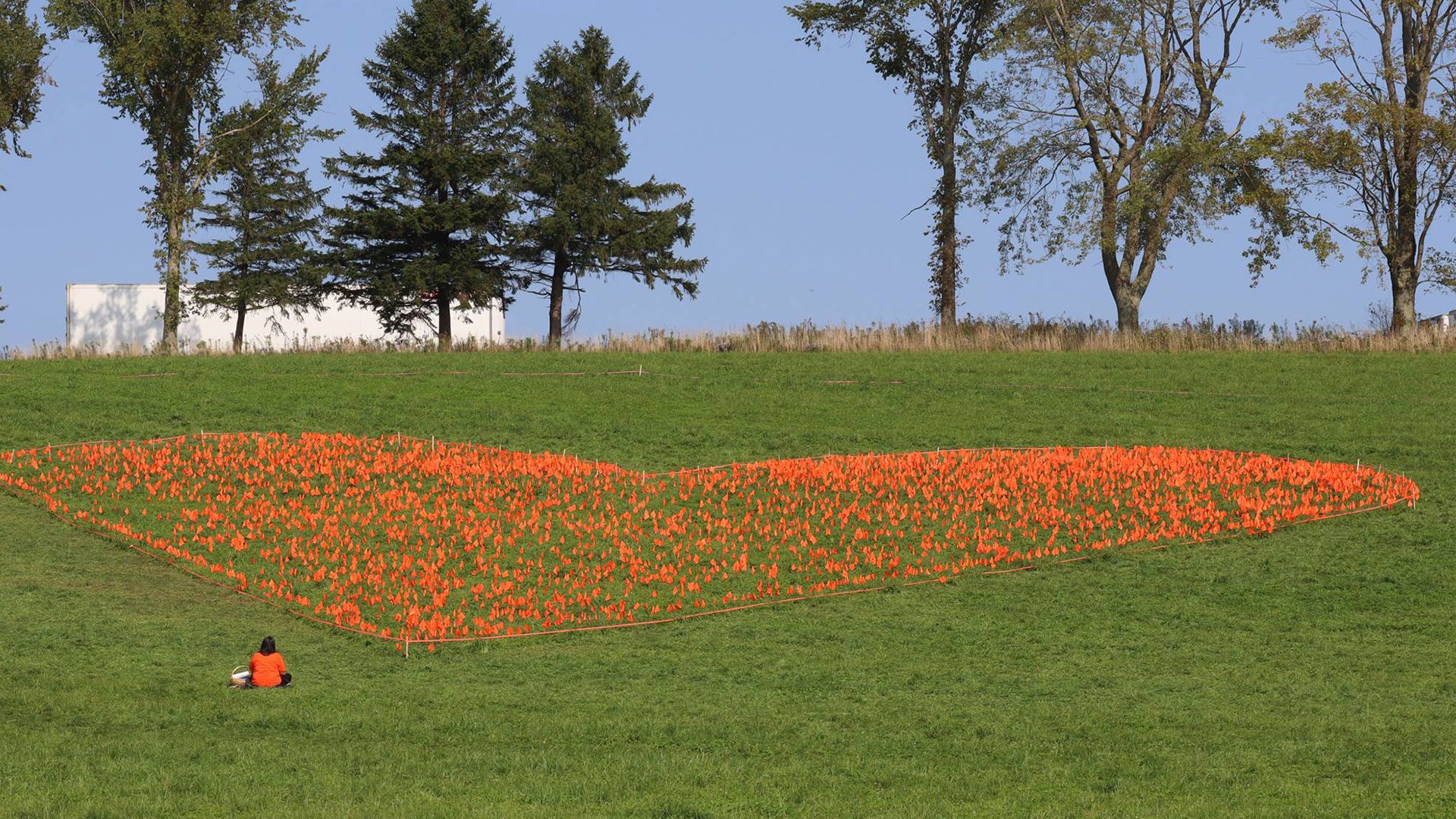
In Nova Scotia, survivors and allies gathered on the site of the former Shubenacadie Residential School which was operated by the Catholic Church from 1930 until 1967.
Thousands of Mi’kmaw and Wolastoqiyik children from the Atlantic region were sent there. Organizers taped off the shape of a heart that was filled with orange flags, a symbol of healing.
A look at National Day for Truth and Reconciliation in Nova Scotia from Angel Moore:
Debbie Paul from the Sipekne’katik Nation, who is a survivor of residential school shared her story with the crowd. She also spoke about the struggle that some survivors have had with obtaining their records.
“It is time to say to government, to charitable organizations, it’s time to come with your documents. We’ve asked for them you will not give them to us, we’ve asked our leaders have asked you’ve never given them to us, and what you do give us it doesn’t even relate to the stories that we the survivors have told,” said Paul.
With files from Leanne Sanders, Pricilla Wolf, Tina House, Trevor Wright, Angel Moore, and the Canadian Press










